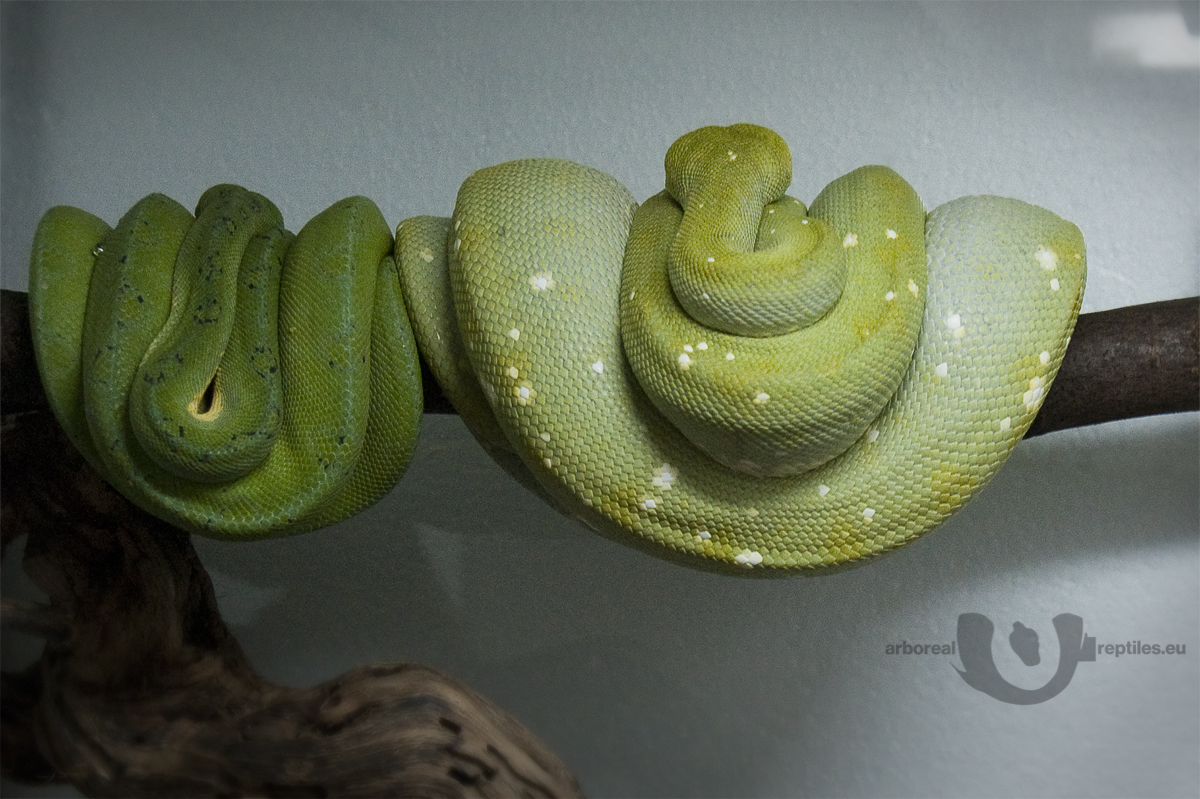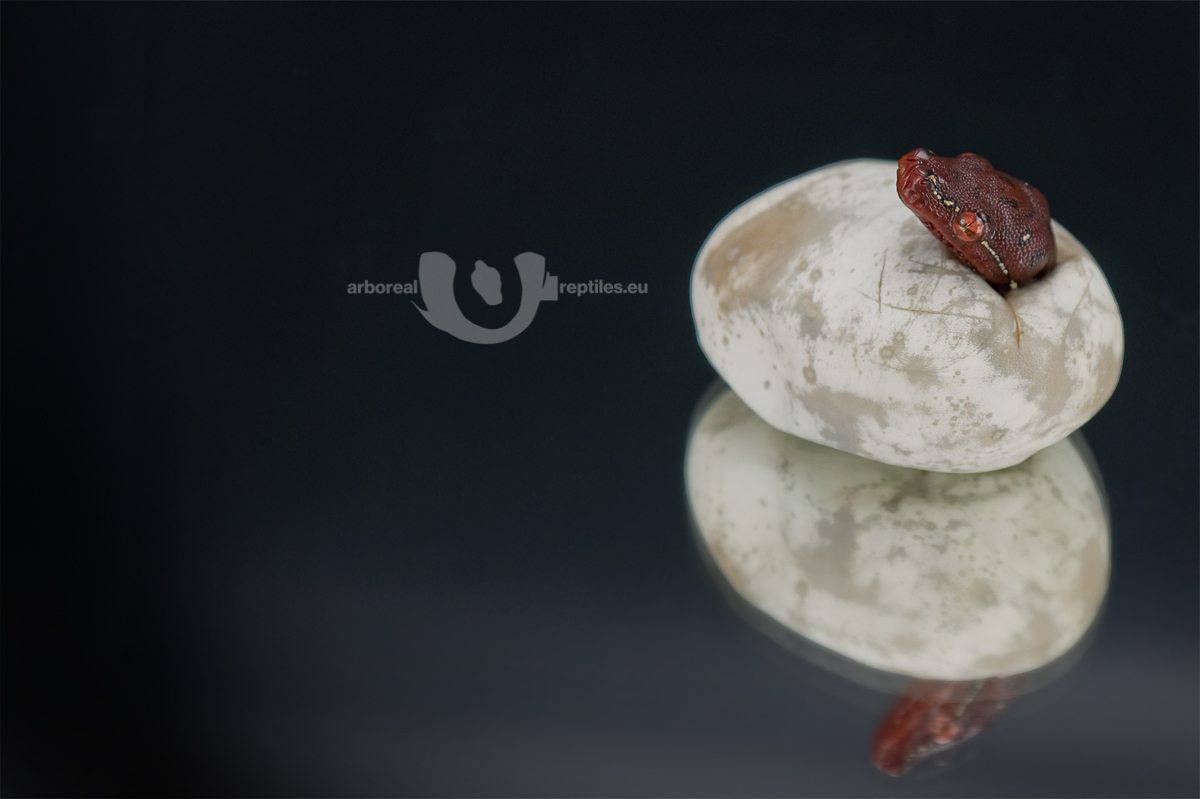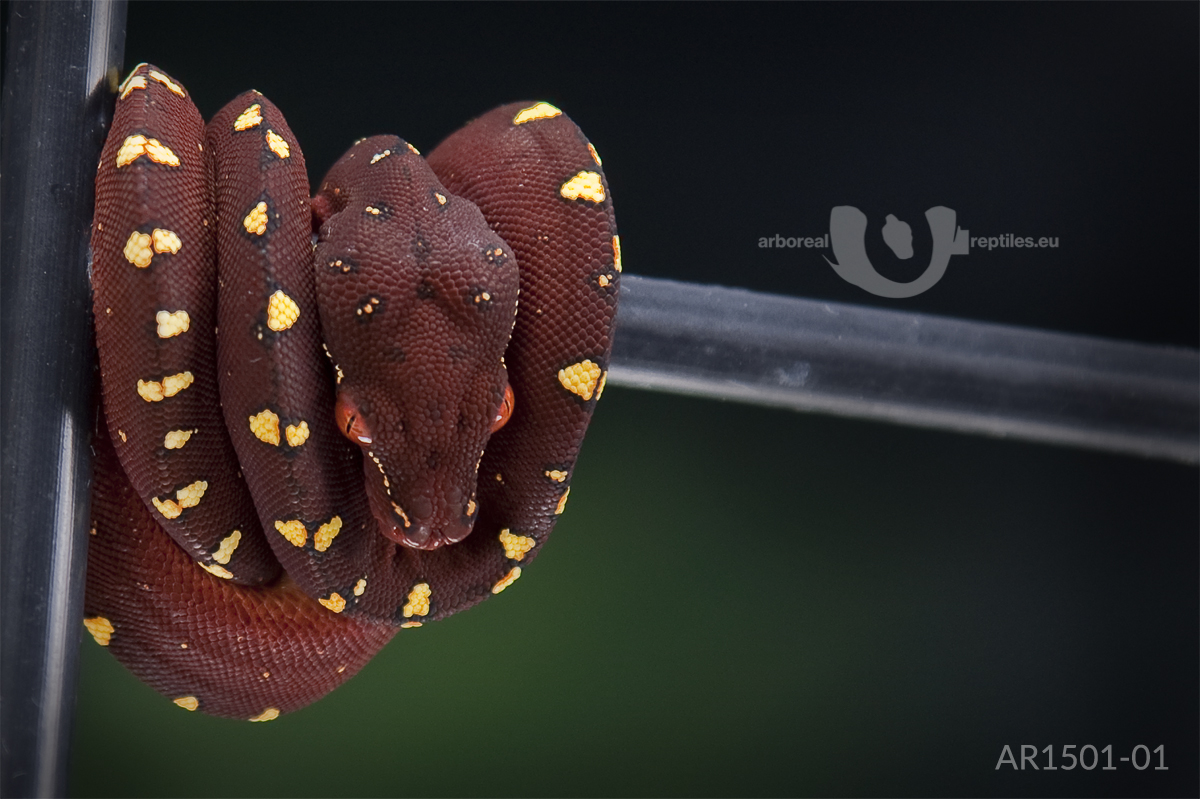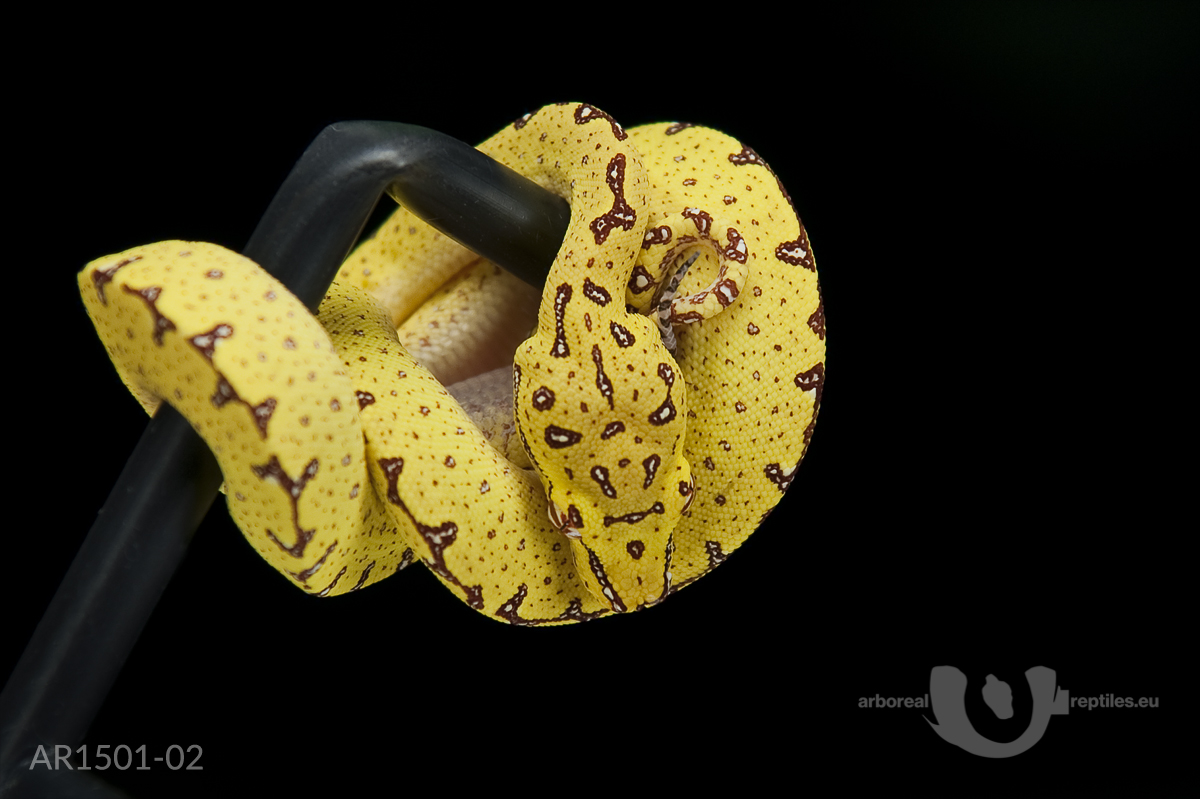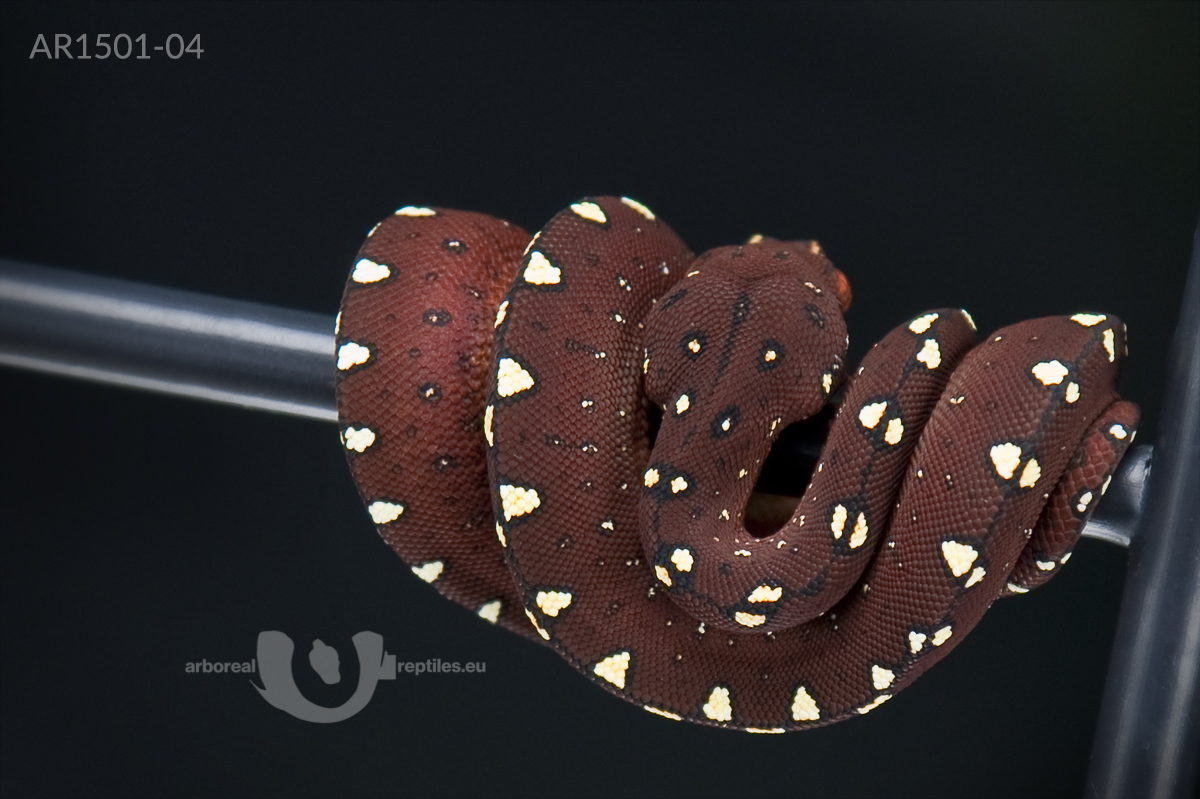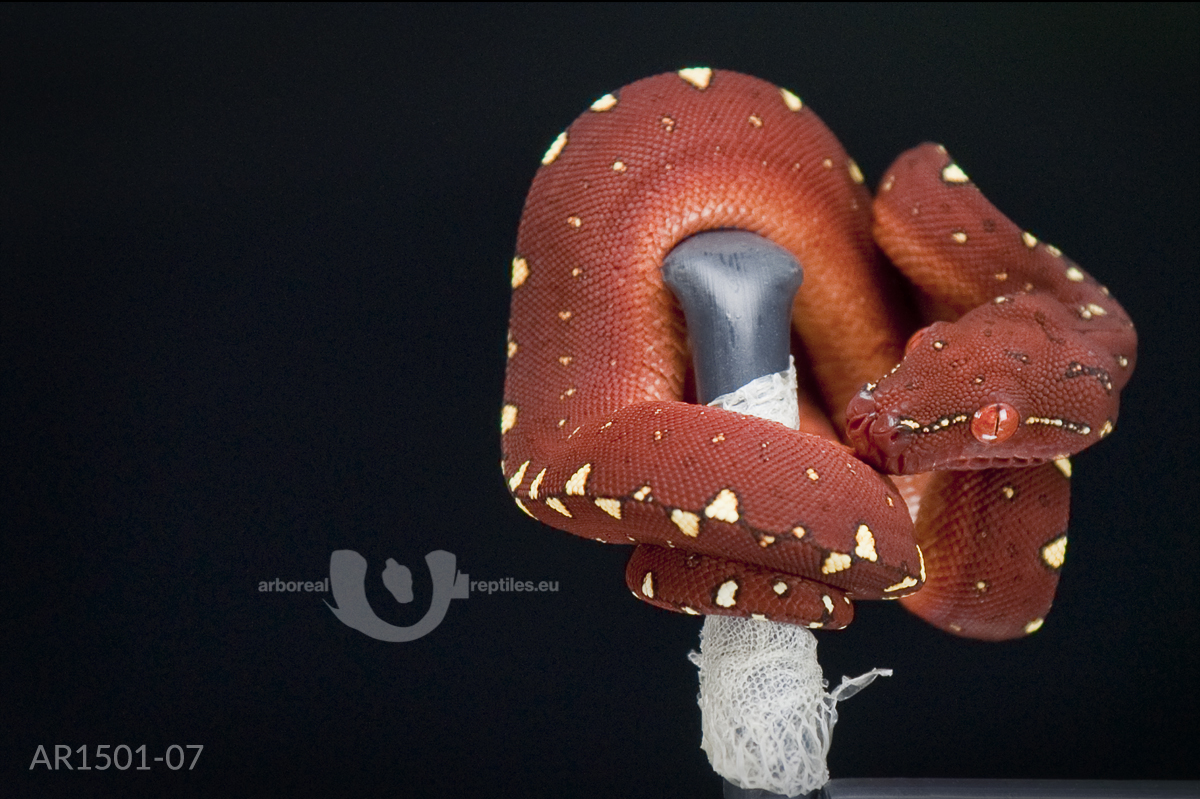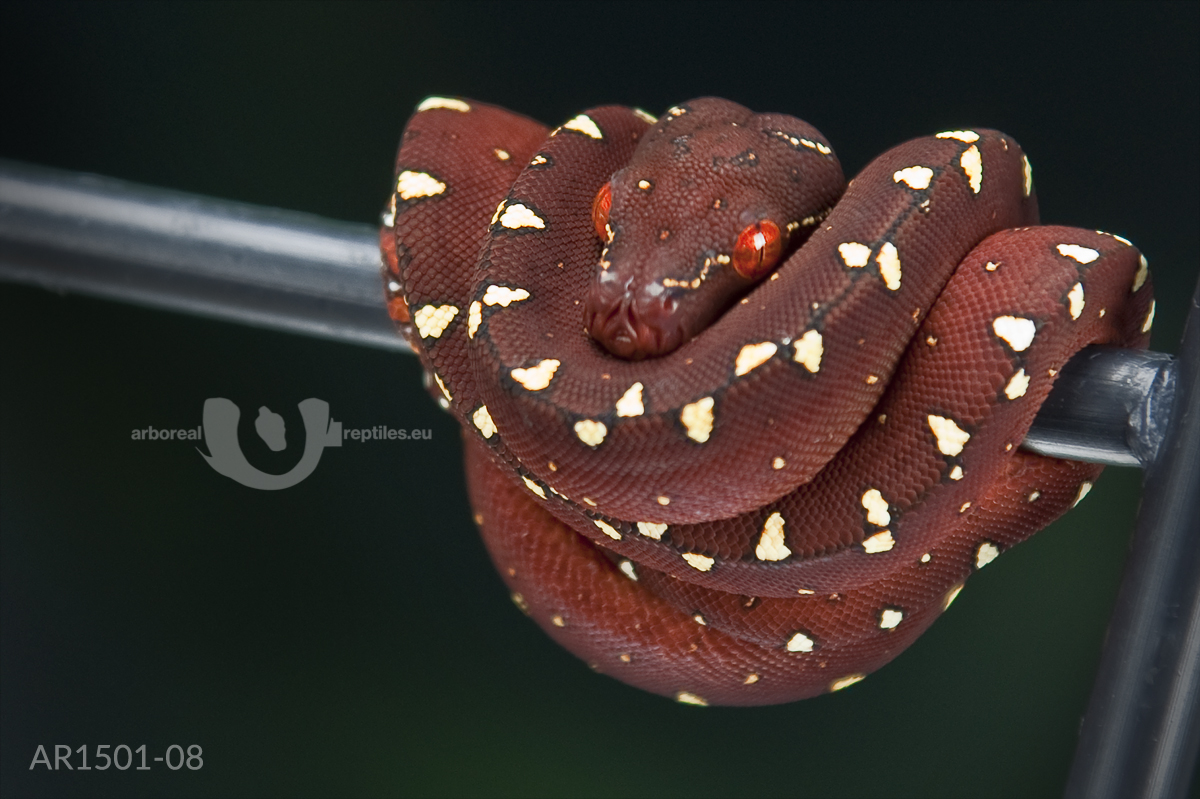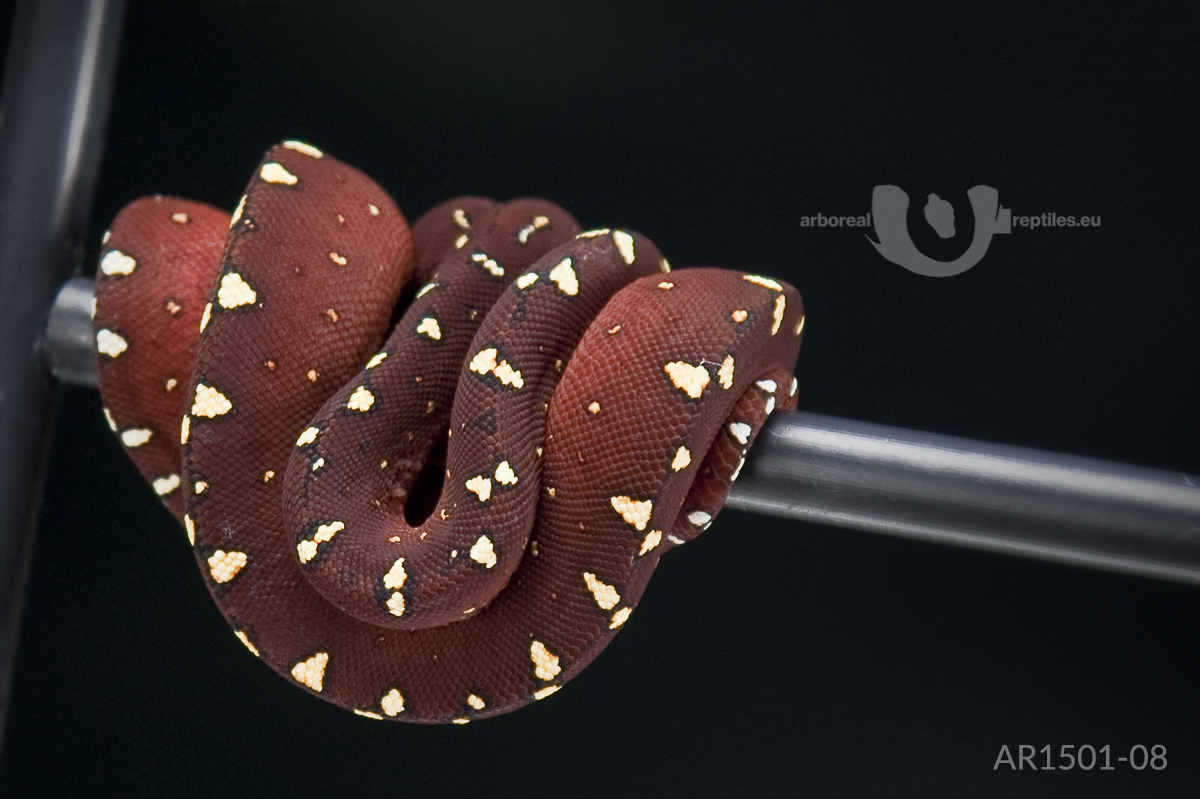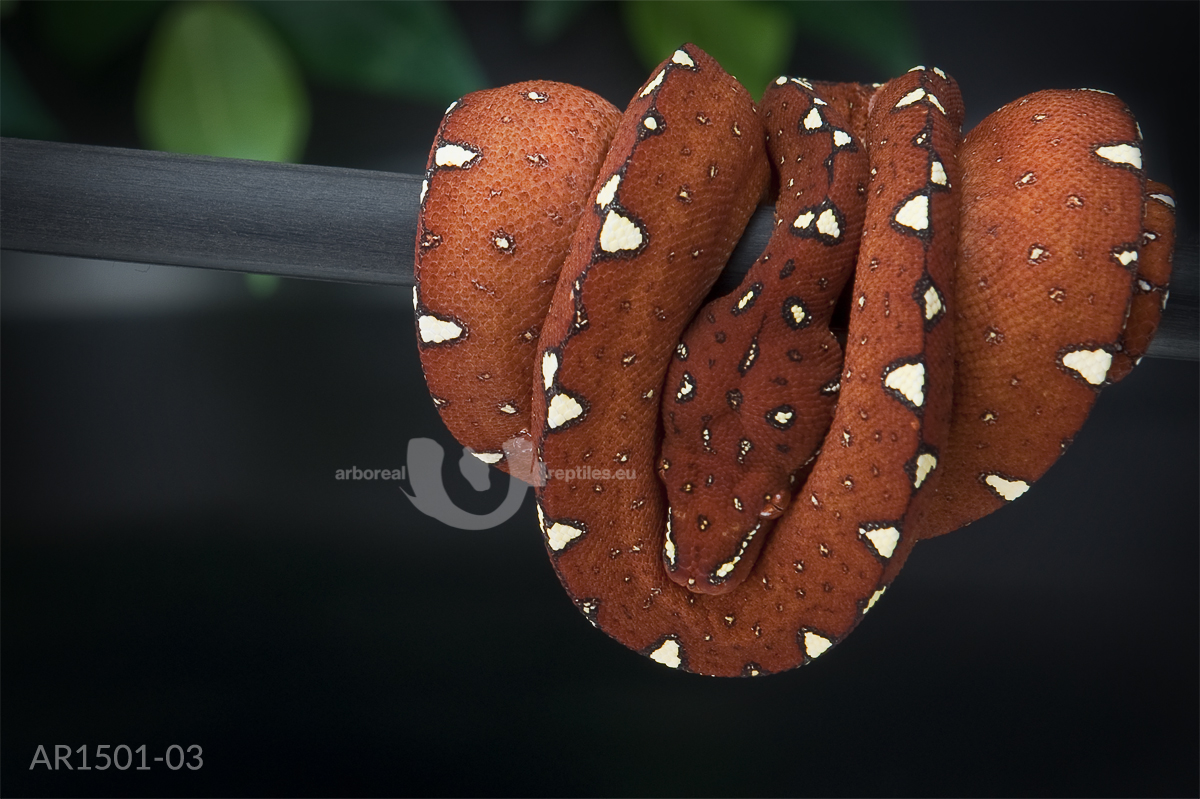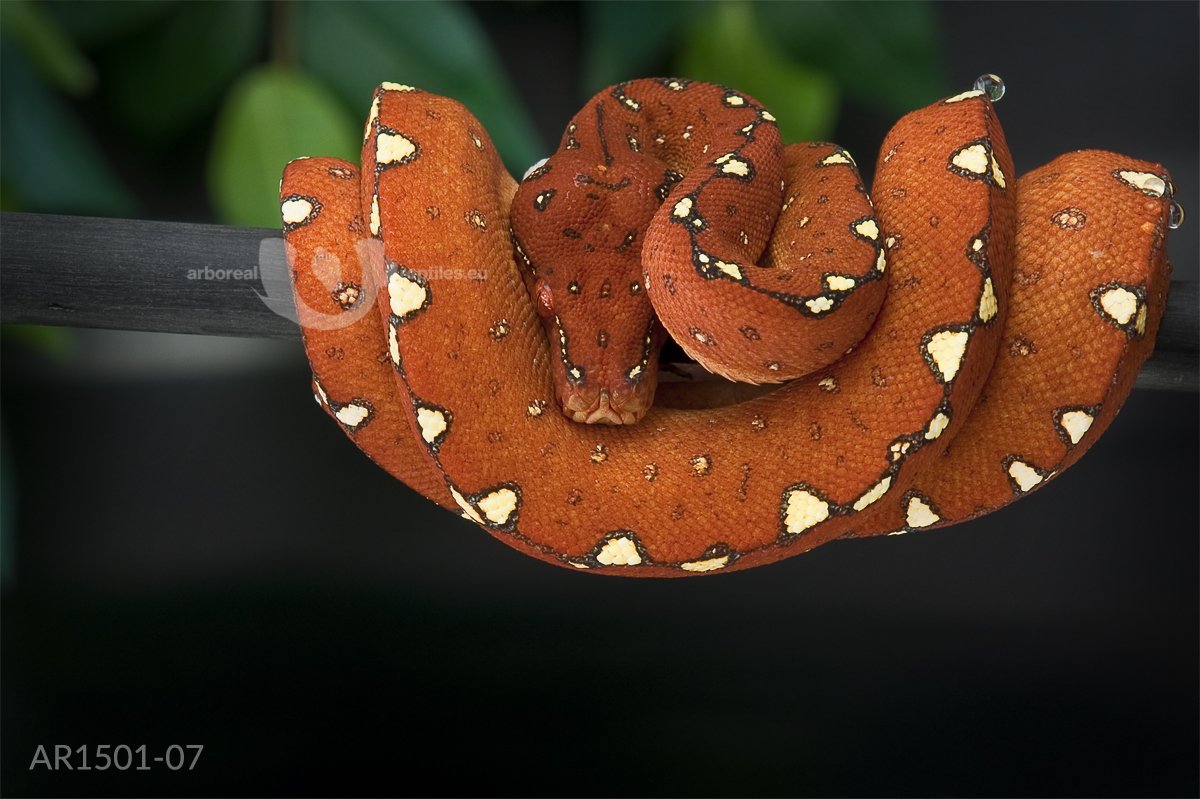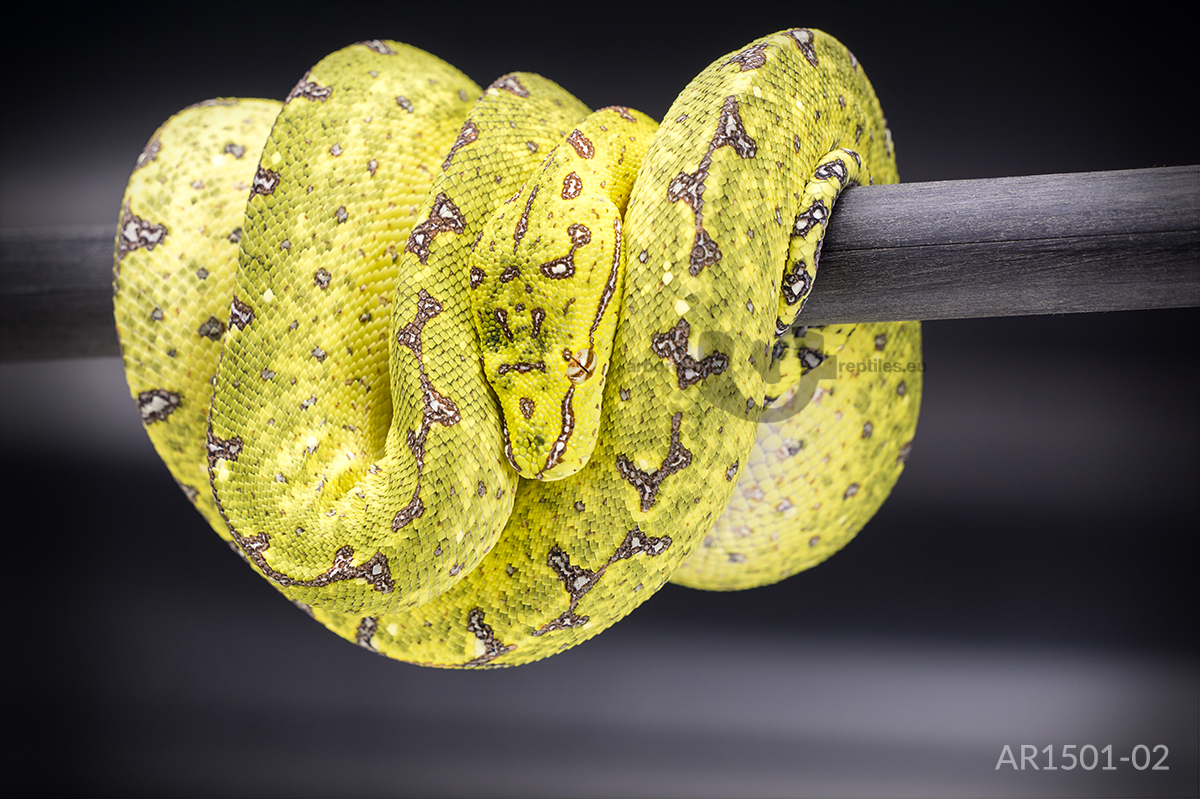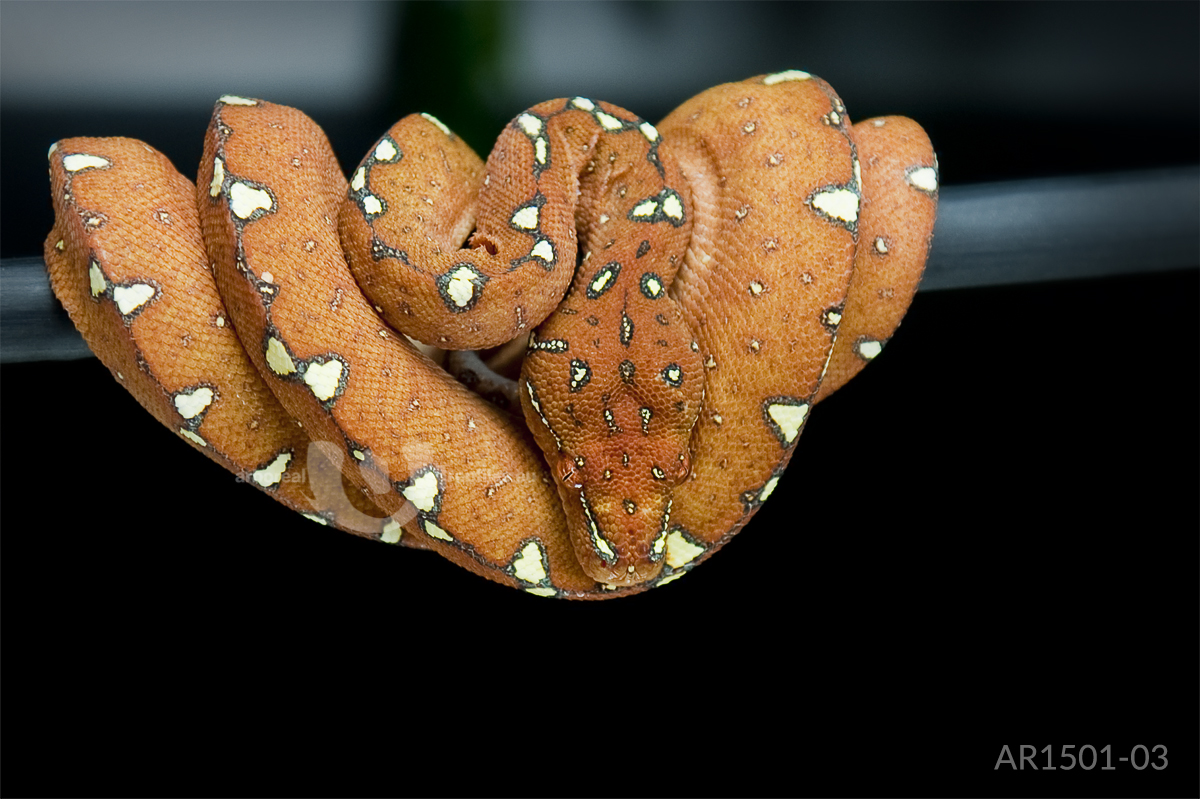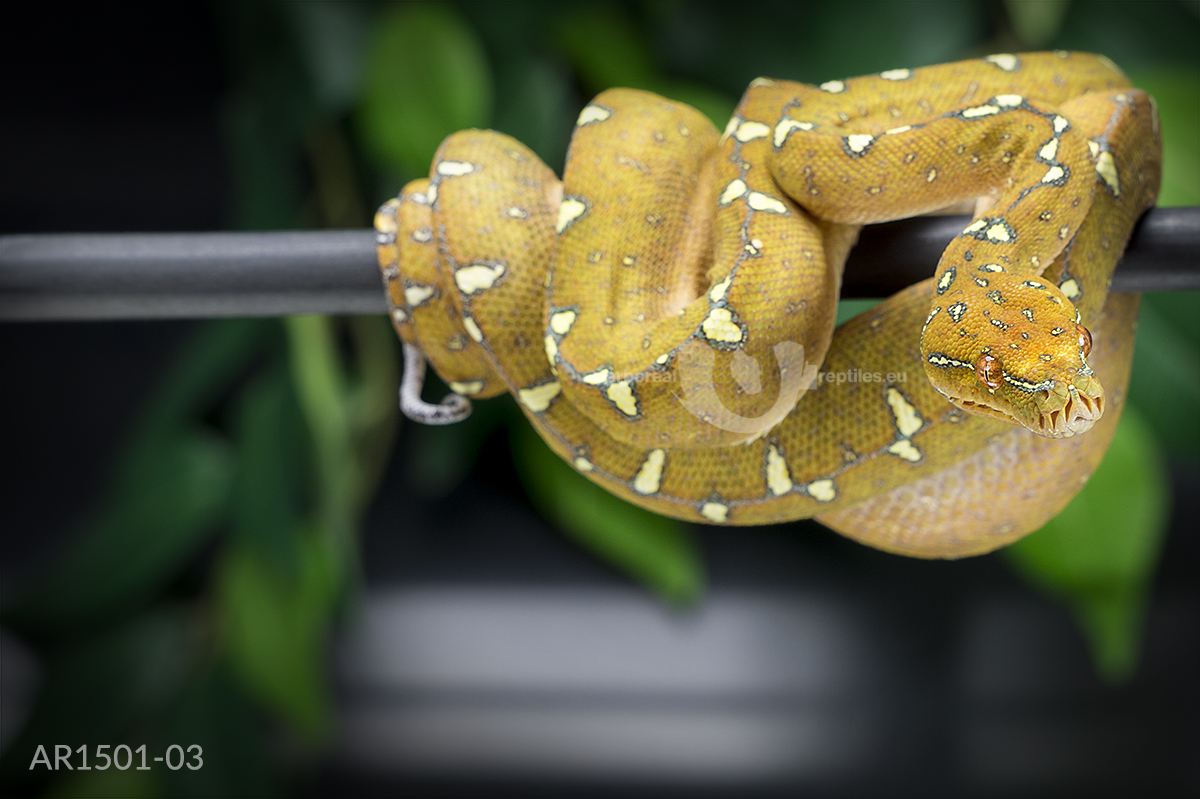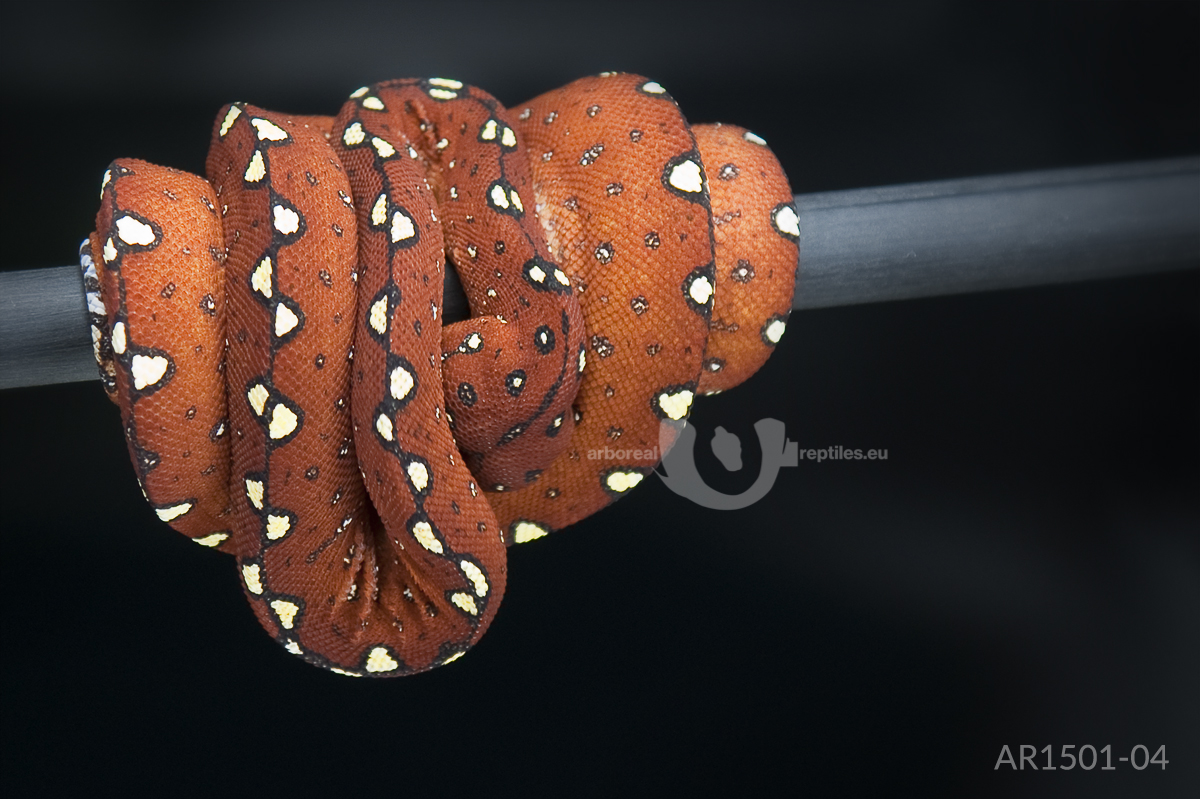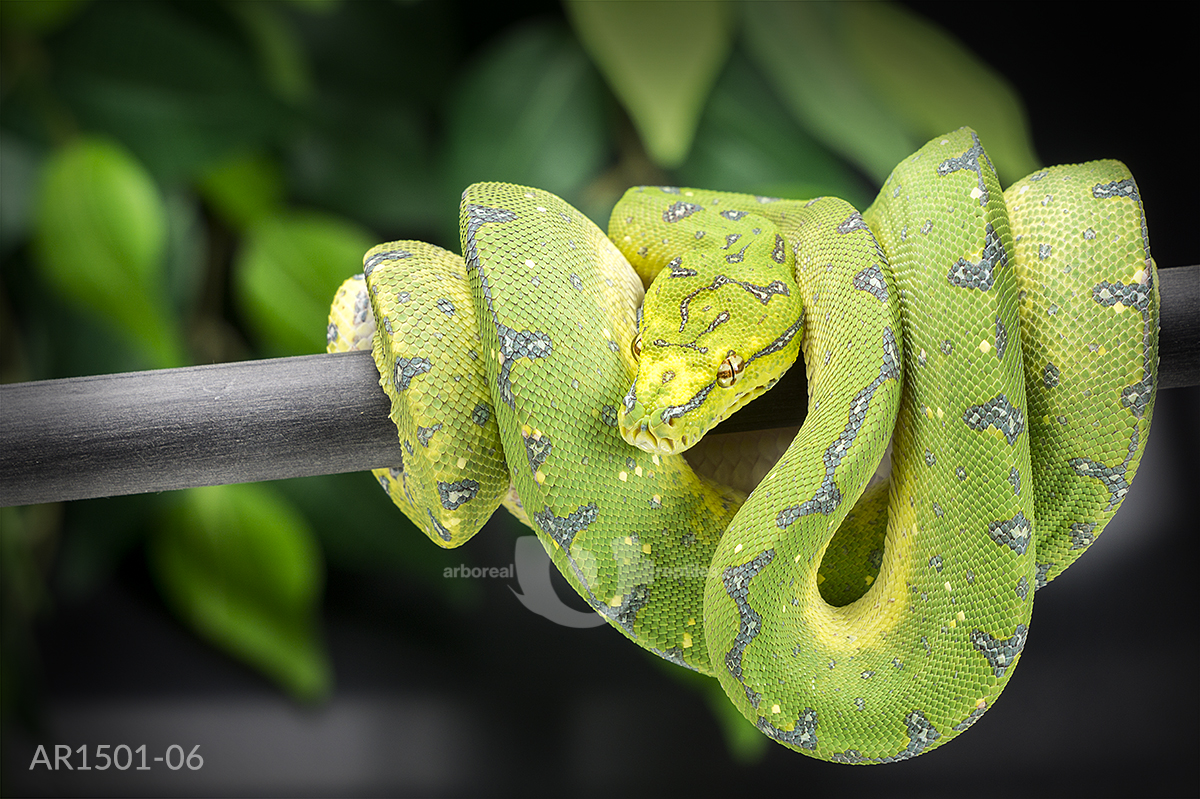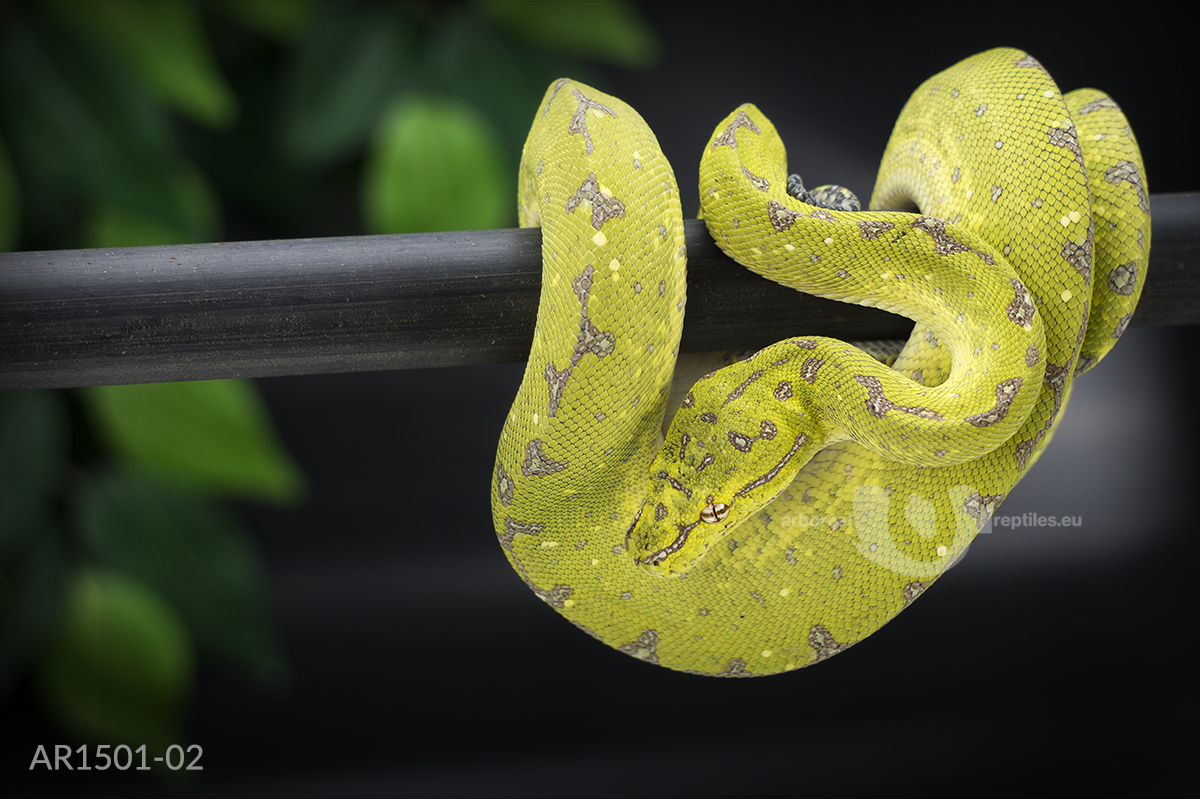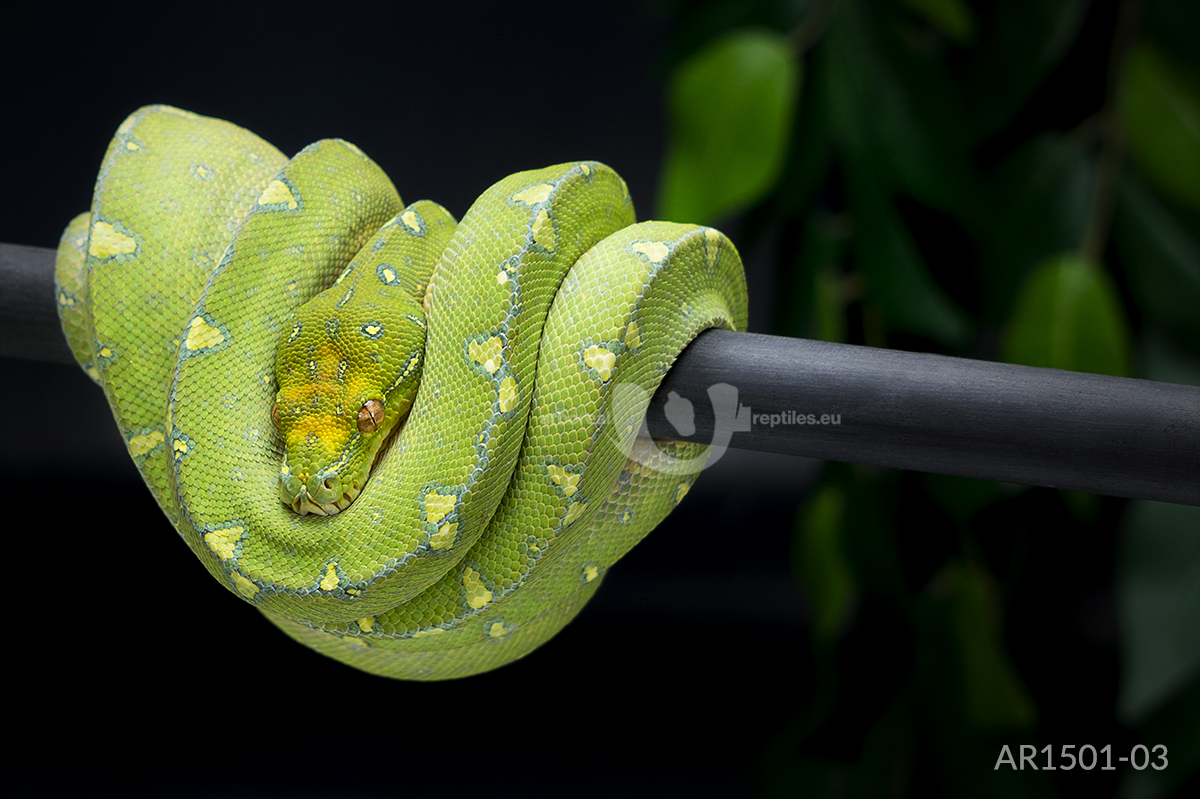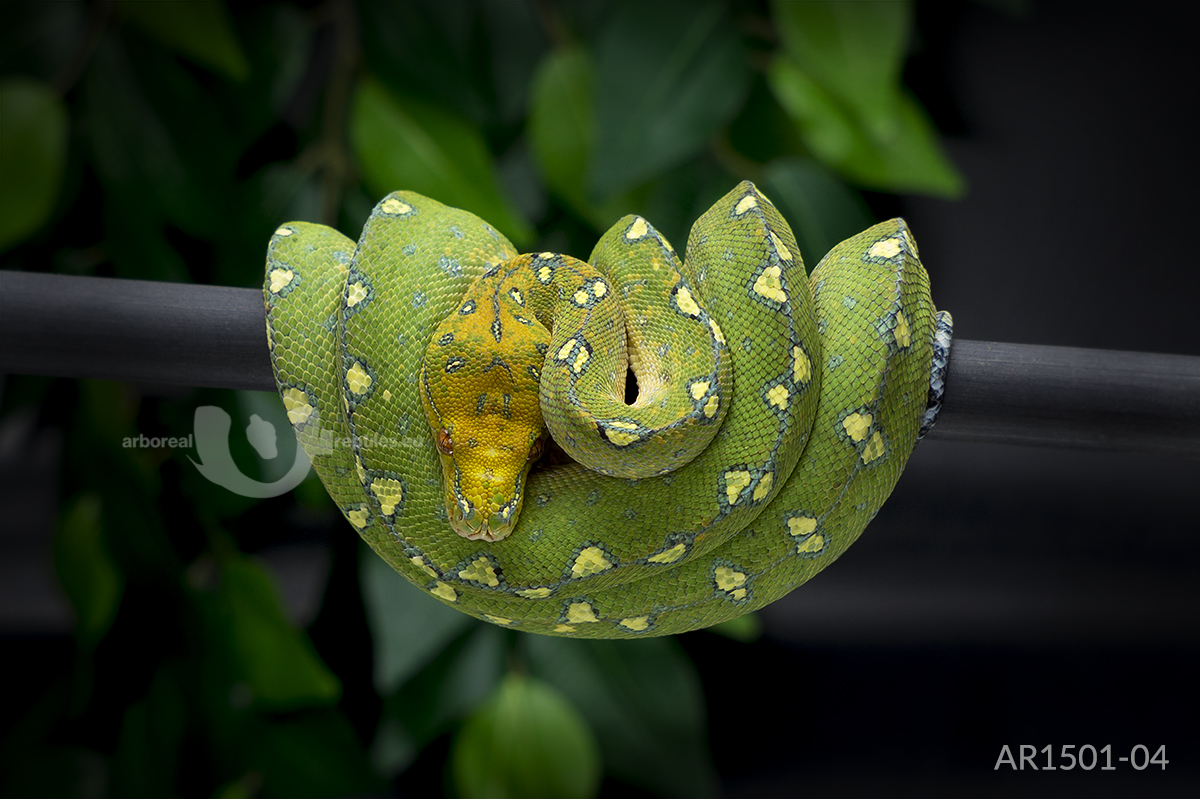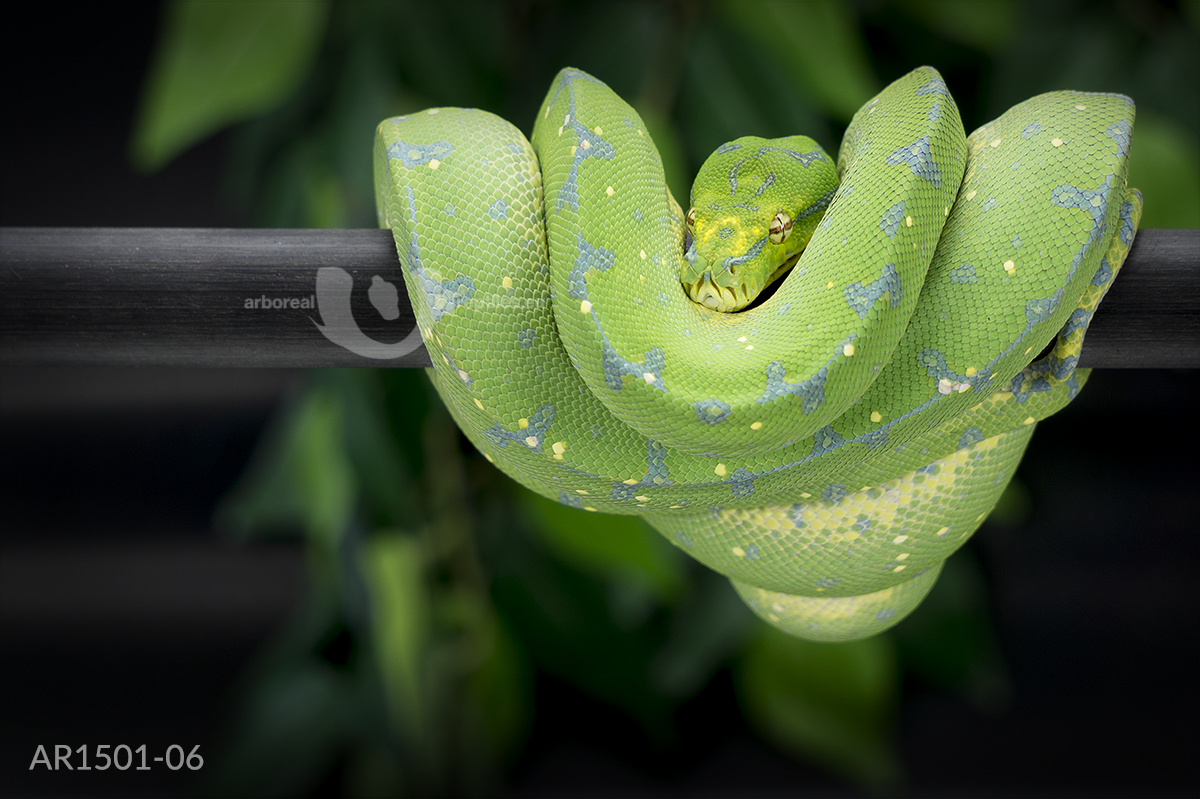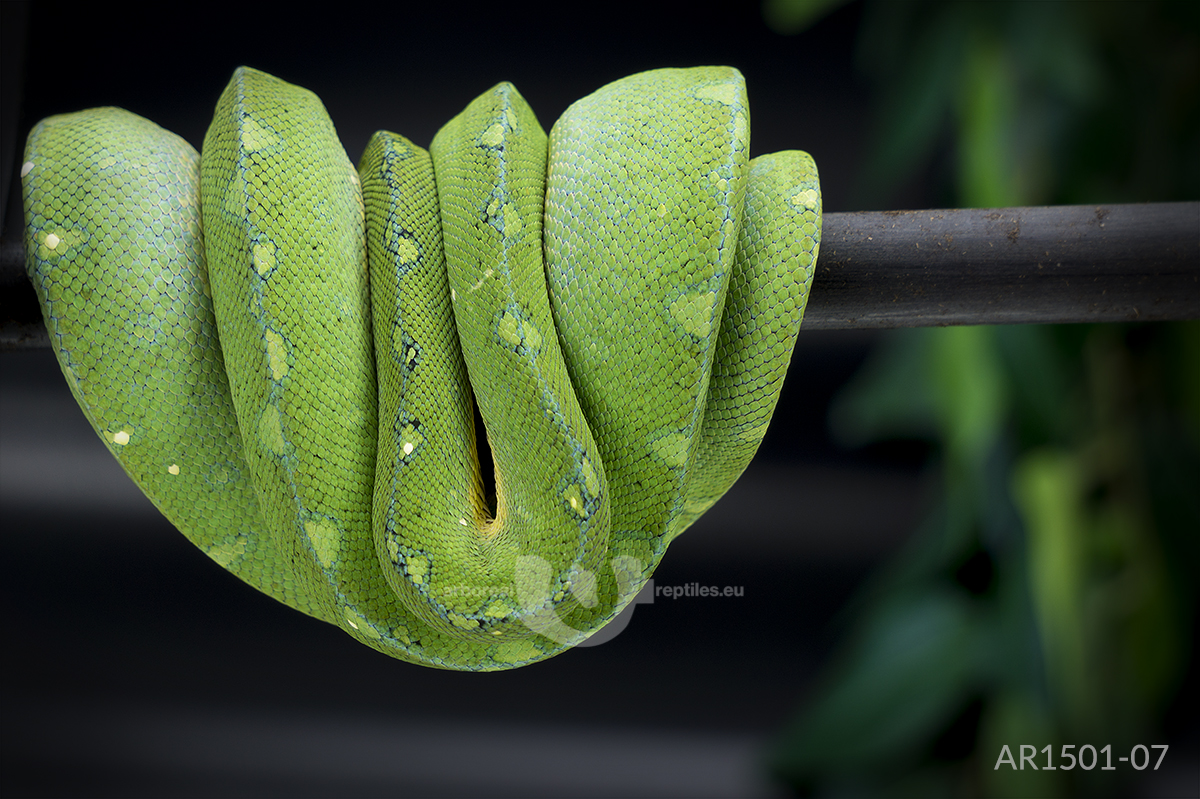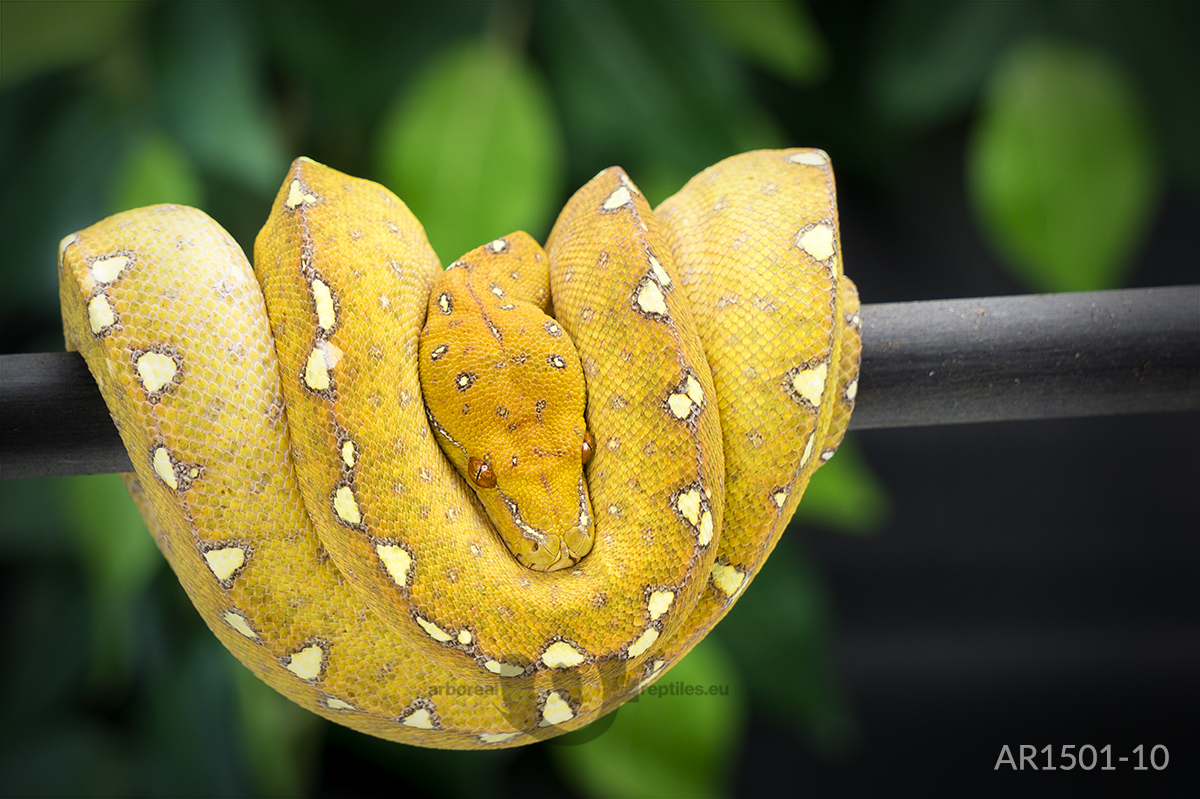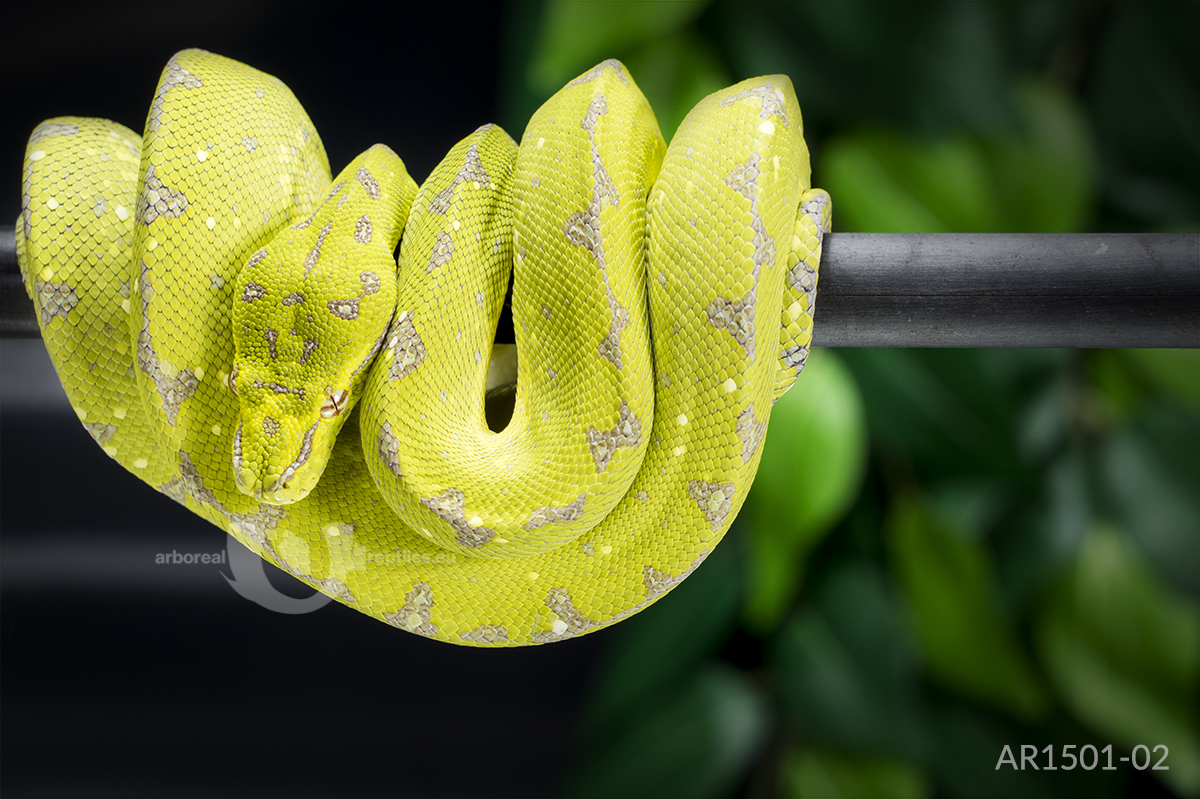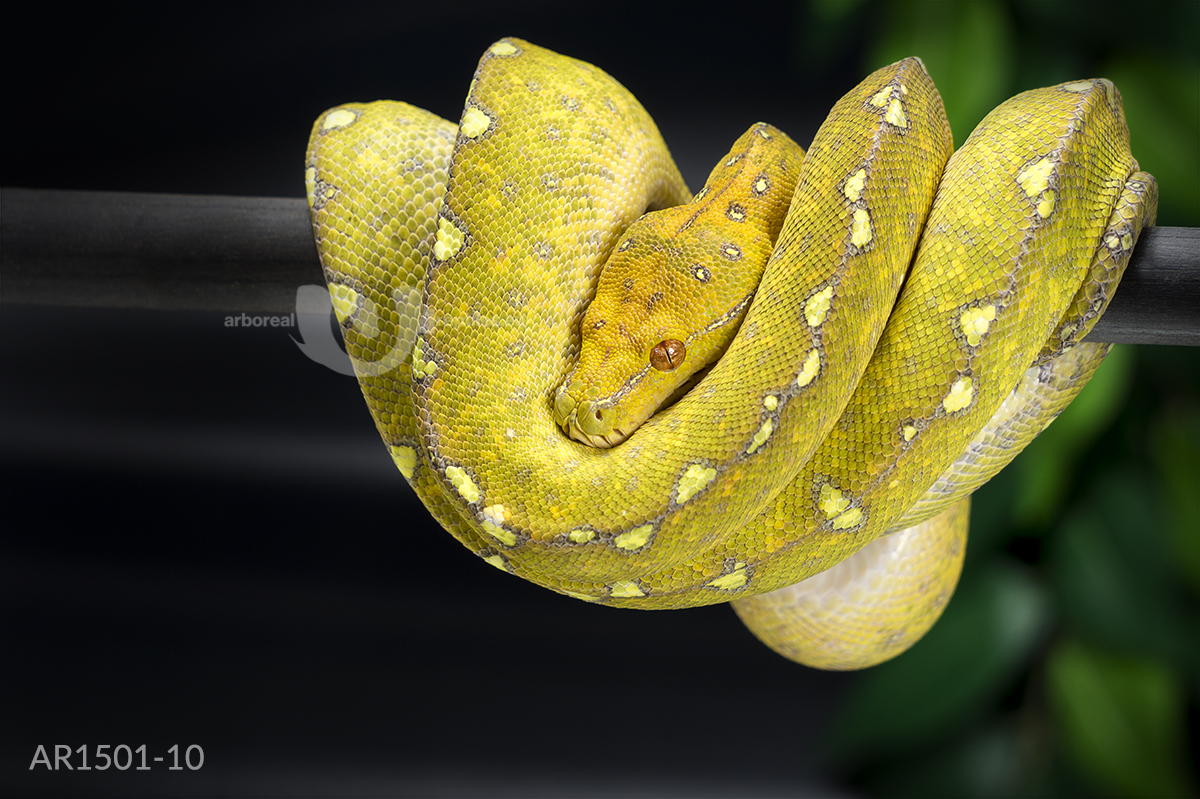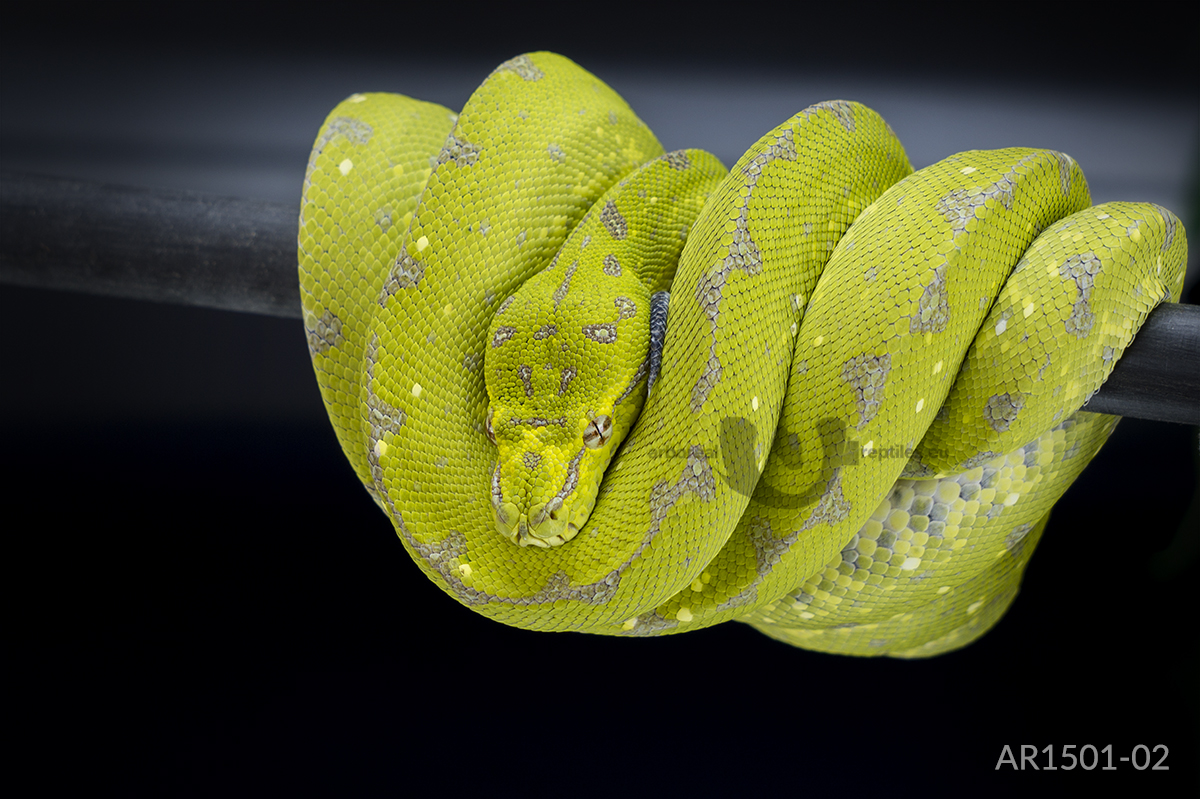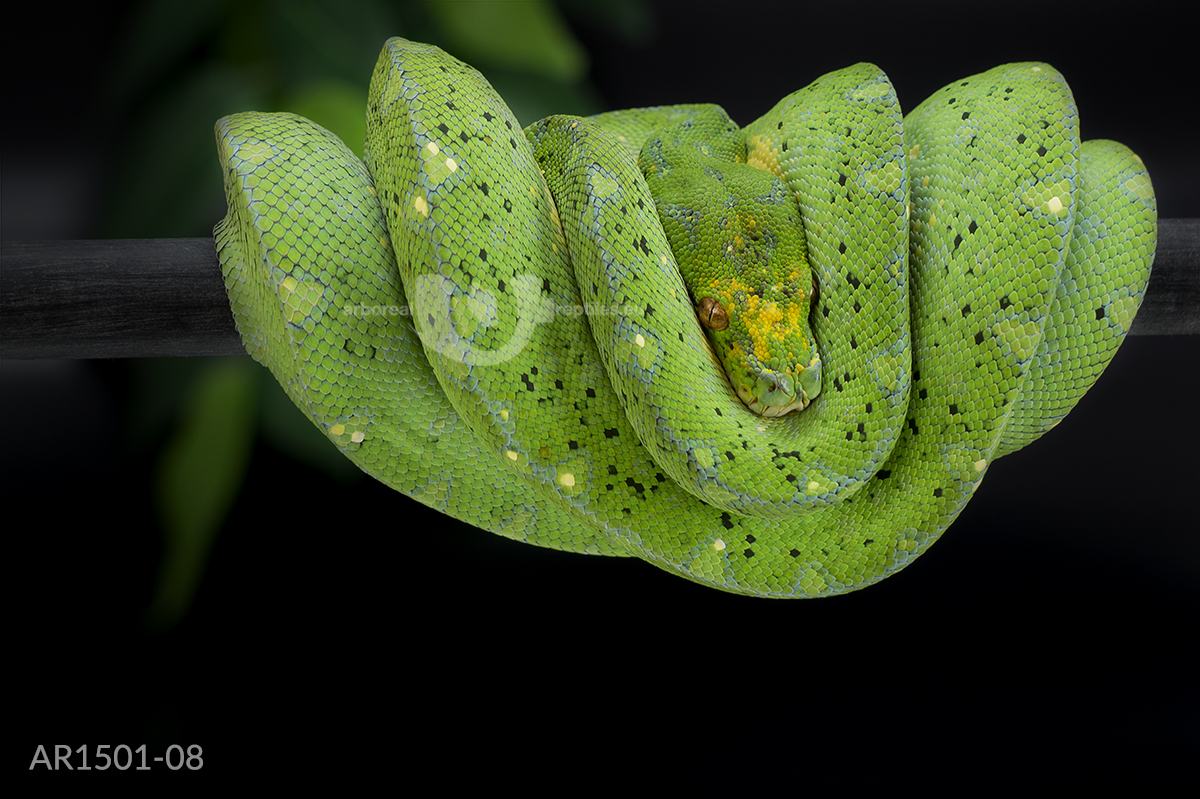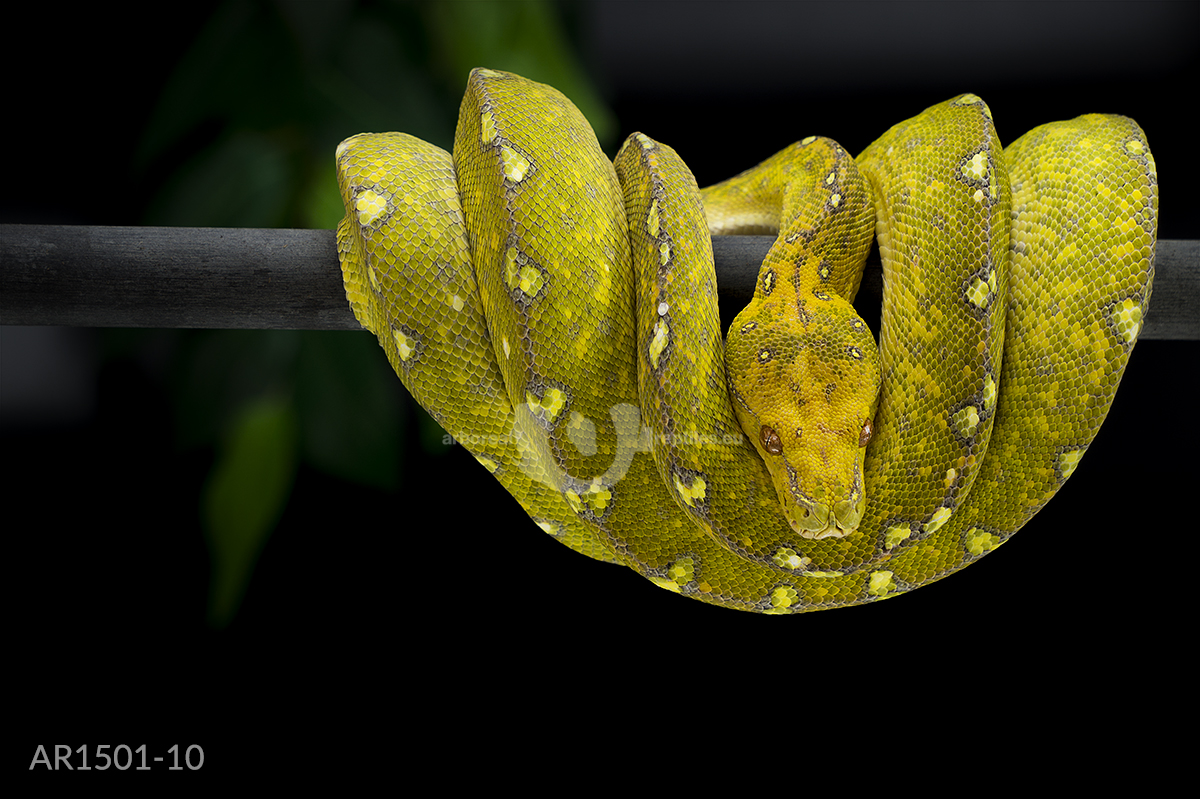Eros x Lyssa AR1501
| clutch number: | AR1501 |
| ovulation: | 2015-02-09 |
| POS: | none |
| egg deposition: | 2015-03-27 |
| number of eggs: | 19 [Ø 17,77g] |
| hatchdate: | 2015-05-15 to 2015-05-16 |
| hatchlings: | 11 [Ø 10,26g] |
| neo color: | 4 maroon | 3 red | 4 yellow |
| breeder: | Arboreal Reptiles |
The parents of the clutch are Lyssa (LY09-01) a biak lady and Eros (CH11-11) a Sorong-Cyclops Mountain out of the Chimaira project 2011 of Christos Issaris (cristoci.com). The female already produced a clutch successfully in 2013, for the male it was the first one. In November we moved Eros into the cage of Lyssa. At the end of December the female took her last meal. Early in January she got noticeably thicker, her blue color more intense and her quick temper clearly more calm. All signs pointed at the generation of follicles.
Although we never saw a copulation during the whole time, there was an ovulation at the 2015-02-09. There was no post ovulation shed (last shed before at the 2015-11-19). We hope to be able to tell, if this was an exception or if this is typical for this female in the future.
Three days ahead the egg deposition, she started to explore the laying box. In the morning she was on her branch again for drinking the spray water.
46 days after the ovulation she started the egg deposition in the early morning hours of 2015-03-27. In the evening we were able to separate the female from her clutch. 16 eggs were perfectly bonded together, three eggs were sorted out by the mother.
All 19 eggs had a thick shell and were consistently colored. We put all of them, divided into two boxes, in the incubator.
In the first one and a half weeks the three eggs, which were sorted out by the mother, and two others showed brown spots and started to smell. So we removed them.
At day 19 of the incubation we decided to separate two more eggs. We kept them until day 51. Their form and color reminded more of an old potato but their smell stayed relatively neutral.
At day 50 the first babies started to cut their eggs. Twelve hours later we cut the other ones. Six neos hatched through the spot we cut for them, the other babies cut themselves their way into life. Sadly one yellow neo died in the egg, fully developed with no brown or moldy spots at the eggshell.
Approximately one and a half weeks after the egg deposition we offered the female her first, small meal which she immediately took. Although she took meals she stopped contracting not before one month was over.
The average hatch weight was 10.26 gram [the lightest weighed 6.45g, the heaviest 11.95g]. All animals shedded themselves successfully 12 to 15 days after their hatch.
Update
An update of a few of the animals which are still in our care, at the age of about ten to eleven months.
An update of a few of the animals which are still in our care, at the age of about seventeen months.






